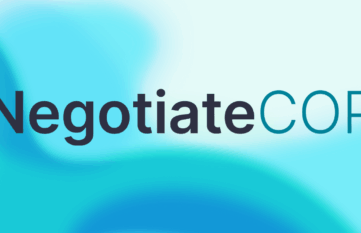Bridging the Data Gap: How the Data to Policy Navigator Empowers Policymakers
This article was first published here: Solution Spaces.
You cannot solve 21st-century problems with 20th-century tools. Yet too often, governments are flying blind – trying to navigate climate shocks, gender inequality, and pandemic fallout without the data they need. Good policy starts with good information. But as of now, nearly half the world’s countries cannot produce key data to measure progress on the Sustaainable Development Goals as a report by the UN Statistics Division (2024) found. Without high-quality, transparent data, decisions become delays. Evidence-based policymaking is not an add-on — it is the foundation for real solutions. And while advances in digital technologies have made new sources of data — such as satellite imagery, mobile data, and social media — more accessible than ever, many governments still struggle to harness this potential. Public institutions often lack the legal frameworks to regulate data exchange or operate within rigid structures as previously stated by the OECD. Lack of competencies in dealing with new data sources further hampers progress.
As a result, policies risk being developed without the solid foundation of evidence they require. Furthermore, poor data use and lack of inclusive data sets often leads to policies that do not effectively address inequalities, particularly those affecting marginalized groups as UNESCO points out using the example of disability data. These institutional and structural challenges are also slowing progress toward achieving the Sustainable Development Goals (SDGs), making it harder for countries to respond to urgent global issues in an inclusive and effective manner.
Smarter Policymaking with Data and AI
To address this gap, GIZ’s Data2Policy initiative on behalf of the Data Lab of the German Federal Ministry for Economic Cooperation and Development (BMZ) and UNDP created the Data to Policy Navigator — a practical, easy-to-use tool designed for government officials with backgrounds ranging from little to advanced knowledge in data for policy making. The Navigator guides users step-by-step through the policy development process, from problem definition to policy evaluation, showing how data can be integrated at every stage.
The tool was built with the needs and realities of policymakers in mind. It is interactive, searchable, and packed with examples and actionable recommendations.
While data is available in large amounts and from a variety of sources, the gap of analysing it, making it accessible and transforming it into tools often remains. This is where AI, if done right, can come in to help: technologies such as Natural Language Processing (NLP) can help to on the one hand analyse large volumes of documents, extract insights, and summarise information to inform decisions. On the other hand, it also enables inclusivity and transparency by providing better access to e.g. government tools through automated translations.
Alongside computer vision,AI-driven forecasts and analytics form the three core AI capabilities now featured on the Navigator. Each core AI ability comes with practical guidelines, real-world use cases and ethical considerations to ensure AI us used in a safe, inclusive and responsible manner. While data protection, surveillance risks and algorithmic biases may pertain and should be taken into consideration when designing AI-projects, the Navigator offers valuable guidance to assess the dangers and boundaries of AI-use for policymaking.
Data and AI go hand in hand as data is the foundation of AI, meaning that better data can support the development of more responsible and tailored AI systems which in turn can improve data usage and analysis. By supporting and guiding decision-makers across all sectors, AI can therefore help create more efficient, responsive, and evidence-based governance. In doing so, AI has the potential to accelerate progress toward the SDGs, by enabling smarter policies, improving service delivery, and ensuring that interventions are better targeted and more inclusive. Take SDG 7, affordable and clean energy: In this case study of Lisbon’s solar strategy, an AI solution supported city developers in mapping and scaling solar installations, thus contributing to a faster and more accurate distribution.
The Navigator in Action: Advancing Health Care and Gender Equality
The following two examples illustrate how these challenges can be tackled in real-world scenarios. Take health care, for example. Data-driven approaches are transforming health care by enabling more strategic and equitable service delivery. One key application is the optimized placement of health care facilities based on population needs and accessibility data. This ensures that underserved communities gain better access to essential health services. In informal settlements, where infrastructure is often lacking, satellite imagery is being used to identify service gaps and guide the expansion of sanitation, health care, and utility infrastructure. By combining geospatial data with public health insights, governments can make more informed decisions that directly improve the well-being of vulnerable populations, as seen with the example of Malawi.
Data-driven approaches are also playing a crucial role in advancing gender equality — particularly in promoting women’s economic empowerment as the use case of Mexico shows. One impactful strategy involves optimizing the placement of childcare facilities based on community needs and accessibility which can be done effectively by combining data sources such as census data from governments with survey data, satellite imagery and other data sources. By ensuring that childcare is available where it is most needed, more women are able to participate in the workforce and pursue economic opportunities. In addition, tracking hashtags and trends across social media platforms helps identify urgent, gender-specific topics being discussed by the public. These real-time insights allow policymakers to respond more effectively to emerging issues, ensuring that gender equity remains a central focus in public dialogue and policy action.
Unlocking the potential of data-driven policymaking
As the world passes the halfway mark of the 2030 Agenda for Sustainable Development, and as crises continue to unfold across the globe, the need for sound, inclusive, data-informed governance is more urgent than ever. To fully close existing data gaps and unlock the potential of data-driven policymaking for better, fairer and more effective policies, countries need to make strategic investments. This includes building the capacities of policymakers, strengthening data governance and privacy standards, and enhancing technical capabilities across institutions.
The overarching goal is to foster data-informed decision-making that builds trust, improves efficiency, and promotes inclusiveness. By doing so, governments can better support progress on the SDGs and respond more effectively to the complex global and local challenges of our time.
The Data to Policy Navigator is more than a tool — it is a timely response to the pressing need for smarter policymaking in a world defined by rapid change. If you want to improve your policies through data and AI, the Data to Policy Navigator offers guidelines, checklists and real-use examples to help you get started. Explore the tool to amplify the impact of your policies.



